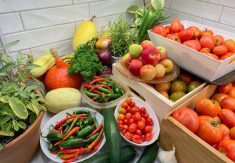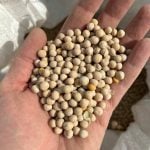How much do you know about food and digestion? Try this quiz to find out:
1. What substance in our mouth helps mix and start the breakdown of food?
2. What action in the mouth helps break apart your food?
3. How many muscles are in the esophagus?
4. Two-part question: What part of the digestive system mixes up your food? After your food is mixed, what is the resulting mixture called?
5. How many litres of food and liquid can a stomach hold when full?
Read Also

Journal pulls long-cited glyphosate study for ethics violations
The journal Regulatory Toxicology and Pharmacology has retracted a 2000 Monsanto-linked glyphosate review, drawing new scrutiny as Bayer faces mounting legal pressure.
6. How long is your large intestine?
7. What are some food groups from the Canada Food Guide?
8. Which food groups are good sources of fibre?
How did you do? Here are the answers:
1. Saliva in our mouth begins the digestion process by lubricating food, which helps with chewing and swallowing. Saliva contains an enzyme (amylase) that begins the breakdown of starches into sugars. That is why a cracker tastes sweeter after we chew for a while.
2. Chewing breaks apart foods. Along with providing us a dazzling smile, strong teeth allow us to chew our food, which aids our ability to digest it properly. Don’t forget to brush and floss your teeth.
3. The esophagus consists of two layers of muscles. We can swallow even if we eat upside down. However, we don’t recommend eating in that position because you could choke.
4. Your stomach is a muscular organ that mixes your food. The resulting mixture is called chyme (pronounced like “rhyme” with a “k”).
5. On average, a stomach can hold about a litre (about four cups) of food and liquid. That’s why you might feel uncomfortable after eating a lot of food.
6. Your large intestine is about five feet long. Twice as wide as the small intestine, the large intestine is where water is reabsorbed prior to the waste leaving your body.
7. Some food groups are: fruits and vegetables, grain, milk and alternatives, meat and alternatives.
8. Fruits, vegetables, whole grains, dry edible beans and pulses are good fibre sources. To help meet your fibre needs, fill half your plate with fruits and vegetables, make half your grain choices whole grains, and add some dry edible beans and pulses, such as chickpeas, lentils and split peas, to your menu. When adding fibre, start slowly and drink plenty of water.
For good digestive health, you also need plenty of physical activity such as walking.














